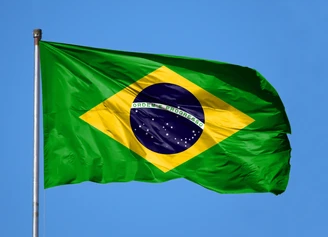The Chile National Flag, also known as “La Estrella Solitaria” (The Lone Star), is a significant symbol of Chilean identity and pride. It carries a rich history and profound symbolism that reflects the country’s struggle for independence and its national values. In this article, we will explore the fascinating story behind the Chile National Flag, its design and symbolism, its evolution over time, its importance, flag etiquette in Chile, and more.
History of the Chile National Flag
The origins of the Chile National Flag can be traced back to the early days of Chile’s fight for independence. On October 18, 1817, Chilean General Bernardo O’Higgins and his forces successfully liberated the city of Talca from Spanish control. To commemorate this victory, O’Higgins decided to adopt a new flag for the emerging nation.
Design and Symbolism of the Chile National Flag
The Chile National Flag features two horizontal bands of white and red, with a blue square in the upper hoist-side corner. Within the blue square, a white five-pointed star shines brightly. Each element of the flag holds symbolic significance that represents Chilean ideals and history.
Colors of the Flag
The colors of the Chile National Flag have deep historical meaning. The white band symbolizes the snow-covered peaks of the Andes Mountains, representing purity and the snow-capped peaks that grace Chile’s landscape. The red band represents the bloodshed during the fight for independence, symbolizing courage and sacrifice.
The Star and the White Band
The white five-pointed star is known as “La Estrella de Chile” (The Star of Chile). It represents a guide for progress and honor, illuminating the path toward liberty and freedom. The star is positioned within the blue square, which signifies the Pacific Ocean, highlighting Chile’s extensive coastline and its strong maritime history.
The Coat of Arms
At the center of the white band, the Chile National Flag displays the country’s coat of arms. The coat of arms includes a condor, a huemul (an endangered deer species), and an Andean condor perched atop a wreath of laurel leaves and palm branches. This emblem represents Chile’s diverse geography, abundant natural resources, and the bravery of its people.
Evolution of the Chile National Flag
Throughout its history, the Chile National Flag has undergone several modifications. Initially, the flag resembled the flag of the United States, with alternating white and red stripes and a blue canton. Over time, the flag evolved to its current design, which was officially adopted on October 18, 1817.
Importance and Significance of the Chile National Flag
The Chile National Flag holds immense importance for Chileans. It serves as a unifying symbol of national identity and unity, fostering a sense of pride and patriotism among the people. The flag is prominently displayed during national holidays, celebrations, and sporting events, evoking a deep sense of belonging and solidarity.
Flag Etiquette in Chile
In Chile, there are specific protocols and guidelines for the proper handling and display of the national flag.
Displaying the Flag
When displaying the Chile National Flag, it should be flown freely and fully extended. It should never touch the ground or be used for decorative purposes, as it is a revered national symbol. It is customary to display the flag in public and private spaces, including government buildings, schools, and homes.
Folding and Storage of the Chile National Flag
When folding the Chile National Flag, it should be done with utmost care and respect. The flag should be folded in a triangular shape, with the coat of arms visible on the outside. When storing the flag, it should be kept in a clean and dry place, away from direct sunlight or harsh conditions.
National Flag Days and Celebrations
Chile celebrates several national flag days throughout the year, including Flag Day on October 18th and Navy Day on May 21st. These occasions are marked with patriotic ceremonies, parades, and cultural events, where the flag takes center stage.
FAQs
Q1. Who designed the Chile National Flag?
A1. The exact designer of the Chile National Flag is unknown, but its current design was adopted on October 18, 1817.
Q2. How many points does the star on the Chile National Flag have?
A2. The star on the Chile National Flag has five points.
Q3. What do the colors of the flag represent?
A3. The white band symbolizes purity and the snow-covered peaks of the Andes Mountains, while the red band represents courage and sacrifice.
Q4. What is the significance of the coat of arms on the Chile National Flag?
A4. The coat of arms represents Chile’s diverse geography, natural resources, and the bravery of its people.
Q5. How is the Chile National Flag celebrated in Chile?
A5. The Chile National Flag is celebrated through various national flag days and events, including Flag Day and Navy Day, with patriotic ceremonies and parades.
Conclusion
The Chile National Flag stands as a powerful symbol of Chilean heritage, independence, and unity. Its design and colors reflect the nation’s natural beauty, struggles, and aspirations. With its rich symbolism and deep historical roots, the flag continues to inspire and evoke a sense of pride in the hearts of Chileans, serving as a testament to the country’s past, present, and future.
References
- National Library of Chile. (n.d.). The Chilean Flag. Retrieved from http://www.bibliotecanacionaldigital.gob.cl/bnd/628/w3-article-375594.html
- Ministry of Foreign Affairs of Chile. (n.d.). Chilean Flag. Retrieved from https://chilereports.cl/culture/chilean-flag/
- World Flags 101. (n.d.). Chile Flag – Colors, Meaning, History & Symbolism. Retrieved from https://www.worldflags101.com/c/chile-flag.aspx

